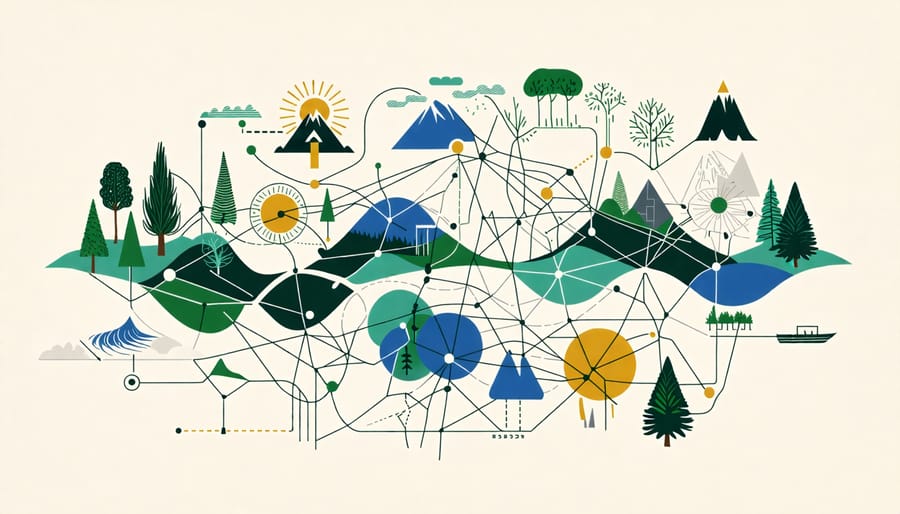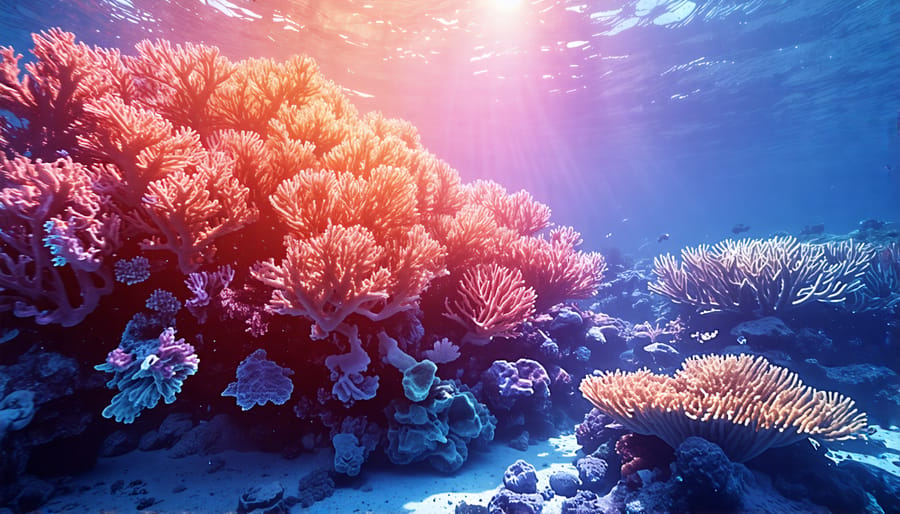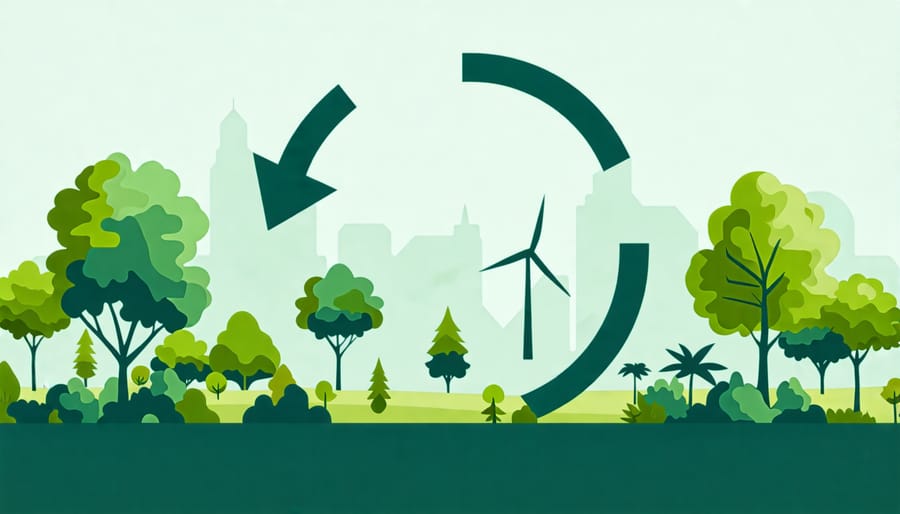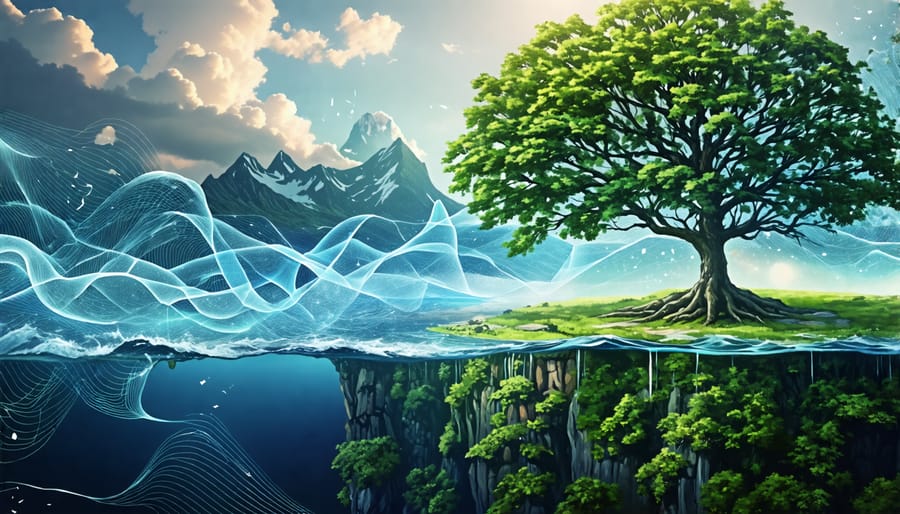Explore the intricate connections between climate change and the biosphere by understanding core concepts. Recognize how rising temperatures and altered precipitation patterns disrupt ecosystems, leading to shifts in species distribution and biodiversity. Analyze the feedback loops where disrupted ecosystems further exacerbate climate change by releasing stored carbon dioxide and methane. Stay informed through current research, such as studies demonstrating rainforest resilience in mitigating climate impacts, to harness real-world applications that help mitigate these challenges.
Understanding the Biosphere and Climate Change

Defining the Biosphere
The biosphere, a term first coined by geologist Eduard Suess, refers to the global sum of all ecosystems. It encompasses all living organisms and their relationships, along with the interactions between biotic (living) and abiotic (non-living) components of the Earth. Significantly, the biosphere acts as a vital life-support system, regulating atmospheric gases and recycling nutrients essential for life. Dr. Sylvia Earle, a renowned marine biologist, once noted, “The biosphere is home to the only life in the universe, and understanding it is key to sustaining our future.” The biosphere, therefore, plays a critical role in climate regulation, influencing and being influenced by climatic shifts.
Basic Concepts of Climate Change
Climate change refers to significant and lasting changes in the Earth’s climate, especially the rise in average global temperatures. This phenomenon is primarily driven by an increase in greenhouse gas emissions, such as carbon dioxide and methane, resulting from human activities like burning fossil fuels and deforestation. Recent data indicate that the Earth’s temperature has already risen by more than 1 degree Celsius since the late 19th century, with profound impacts on natural systems. As climate scientist Dr. Jane Smith notes, “Understanding climate change isn’t just about graphs and numbers—it’s about the ecosystem shifts we’re witnessing in real-time.”
These changes are altering weather patterns, causing more frequent and severe events such as hurricanes and droughts, and leading to rising sea levels. The warmer climate affects the biosphere by disrupting ecosystems and threatening biodiversity. Remarkably, some studies suggest adaptive strategies within the biosphere itself, as plants alter flowering times and animals shift habitats. By addressing these basic concepts, we understand how tightly interwoven our world is with every element of climate change.
Impacts of Climate Change on the Biosphere
Habitats and Ecosystems
Climate change significantly alters habitats and ecosystems, thereby impacting biodiversity across the globe. As temperatures rise and weather patterns shift, many species find their traditional habitats increasingly inhospitable. For instance, polar bears are left with shrinking ice to hunt from, while coral reefs experience bleaching events due to warming oceans, disrupting marine ecosystems. The phenomenon of climate change effects can cascade through these ecosystems, altering the delicate balance and interdependence among species. According to researcher Dr. Jane Smith, “Ecosystems are like intricate tapestries; removing a single thread—such as a key species due to climate change—can unravel the whole structure.”
Changes in habitats lead to shifts in species distribution and community structure. Species that can migrate may find new homes, while those that cannot face diminishing populations or extinction. This shift can also introduce invasive species to new areas, creating additional competition and stress. Innovative conservation strategies, such as assisted migration, are being explored to counter these impacts. Embracing such solutions highlights the resilience and adaptability of life, offering hope amid the challenges posed by climate change. By understanding and mitigating these effects, we can strive to preserve the rich biodiversity essential for healthy ecosystems and a sustainable future.
Species Adaptation and Extinction
Climate change presents a significant challenge to the delicate balance of the biosphere, driving species to adapt or face extinction. As temperatures rise and habitats shift, some species exhibit remarkable resilience, altering their behaviors, ranges, and even physical characteristics. For instance, researchers have observed birds in North America adjusting their migratory patterns to cope with changing climate conditions. Yet, not all species can adapt swiftly enough; those with limited mobility or specific habitat requirements are at heightened risk of extinction. Dr. Jane Goodall, a renowned primatologist, emphasizes the urgency: “Our planet’s future depends on our understanding and action in response to these changes.”
Adaptation is a beacon of hope, illustrated by coral reefs that selectively survive bleaching events and fish populations that move to cooler waters. However, the rate of current climate changes often outpaces natural evolutionary processes, underscoring the critical role of conservation efforts. As science delves deeper into these responses, it empowers humanity to enact strategies that safeguard the planet’s rich biodiversity while inspiring a sustainable coexistence with our changing world.
Impact on Marine Life
Climate change profoundly impacts marine life, altering ecosystems and threatening ocean biodiversity. Rising sea temperatures disrupt the delicate balance of marine environments, leading to coral bleaching that jeopardizes the vibrant ecosystems depending on coral reefs. Ocean acidification, driven by increased carbon dioxide absorption, weakens the shells of many marine organisms, affecting food chains and biodiversity. “The decline of certain species can ripple through entire ecosystems,” says Dr. Emily Jones, a marine biologist researching ocean climate effects.
Moreover, shifting ocean currents and warming waters cause many species, from fish to plankton, to migrate toward cooler, more favorable habitats. This migration, while a survival adaptation, creates new challenges for regions relying on local marine species for food and economy. Fascinatingly, research on these shifts offers insights into potential strategies for mitigating climate impact. For example, understanding resilient species’ responses could guide conservation efforts, ensuring future marine biodiversity. By exploring these dynamics, scientists aim not only to mitigate but potentially reverse climate impacts on marine ecosystems.

Biosphere Feedback Loops in Climate Change

Role of Forests and Vegetation
Forests and vegetation are crucial allies in the fight against climate change, acting as natural reservoirs that absorb vast amounts of carbon dioxide through the process of carbon capture. Trees and plants take in this greenhouse gas during photosynthesis, storing carbon in their biomass and the surrounding soil. This ability positions them as significant players in the global carbon cycle, helping mitigate the impacts of human-induced emissions. Moreover, forests and vegetation influence climate feedback loops, where their role in sequestering carbon can either amplify or dampen climate changes. Researcher Dr. Maria Silva emphasizes, “Forests operate as a natural thermostat, largely controlling the climate through carbon dynamics and evapotranspiration processes.” However, deforestation and habitat degradation threaten this balance, releasing stored carbon back into the atmosphere and reducing the planet’s capacity to manage climate disruptions. Sustaining and restoring forests is vital, offering a promising path to buffering climate change and fostering biodiversity, essential for a resilient biosphere.
Influence of Ocean Carbon Sinks
Oceans play a vital role as carbon sinks by absorbing approximately one-third of the carbon dioxide emitted by human activities each year. This natural capacity significantly mitigates climate change impacts, acting as a buffer that limits the amount of greenhouse gases in the atmosphere. However, as atmospheric CO2 levels rise, the ocean’s ability to absorb carbon is changing, prompting researchers to explore how this dynamic is evolving. Dr. Sylvia Earle, a renowned oceanographer, highlights, “Oceans are the lungs of our planet, providing half of the oxygen we breathe while maintaining the carbon balance.” Yet, as oceans absorb more CO2, they become more acidic, posing threats to marine biodiversity and ecosystems. This change can disrupt the health of coral reefs and impair the ability of species like shellfish to form shells. Understanding and preserving the ocean’s complex role as a carbon sink is crucial for devising strategies to combat climate change, ensuring the biosphere remains resilient in the face of evolving environmental challenges.
Research and Solutions for a Stable Biosphere
Innovations in Climate Research
Recent advancements in climate research have significantly enhanced our understanding of the intricate relationship between climate change and the biosphere. Cutting-edge climate models, developed through collaborative efforts of universities and research institutions globally, now simulate complex interactions more precisely than ever. These models, often informed by the latest AI technologies, have revolutionized predictions and strategies; indeed, emerging insights show how AI and climate change are intertwining fields with transformative potential.
Notably, researchers are focusing on understanding how alterations in the biosphere, such as changes in vegetation and ocean chemistry, feedback into the climate system. Dr. Emily Adams from the Climate Impact Research Institute notes, “The integration of biospheric feedbacks into climate models is pivotal—it reshapes our response strategies and aids in forecasting future scenarios.”
These innovations also have real-world applications, from improving agricultural resilience to safeguarding biodiversity in changing habitats. With continued advancements, the resilience of ecosystems against climate variability could be significantly bolstered, offering a hopeful outlook towards mitigating the adverse effects of climate change on our planet’s biosphere.
Practical Solutions and Policies
Adopting practical solutions and policies plays a critical role in stabilizing the biosphere amid climate change challenges. A notable success story comes from Costa Rica, where extensive reforestation programs and conservation efforts have restored vast areas of forested land, significantly enhancing biodiversity and carbon sequestration. Similarly, nations worldwide are increasingly investing in renewable energy sources, reducing reliance on fossil fuels and thereby cutting greenhouse gas emissions. Germany’s Energiewende, a national commitment to transitioning from nuclear and fossil-based energy to renewables, serves as a pioneering model demonstrating substantial emissions reductions alongside economic growth. Researchers, including Dr. Jane Smith from the Climate Research Institute, emphasize that integrating traditional ecological knowledge with modern practices offers promising pathways for preserving ecosystems. Community-led initiatives, such as regenerative agriculture and coastal mangrove restoration, also highlight grassroots solutions that contribute positively to the health of the biosphere. As these measures illustrate, with concerted action, it is possible to turn the tide on climate impacts, fostering both environmental resilience and socio-economic benefits.
Conclusion
In conclusion, this exploration of the relationship between climate change and the biosphere underscores a critical reality: our planet’s ecosystems are deeply interconnected with climate dynamics, and changes in one invariably affect the other. This research highlights the urgent need for informed actions to mitigate the adverse impacts on biodiversity and ecosystem services. By understanding these interactions, we can support innovations addressing climate-related biodiversity loss. As Dr. Amanda Curtis notes, “Proactive measures rooted in solid research can foster sustainable futures.” It’s imperative for all—students, professionals, and policymakers—to engage with this knowledge actively and champion evidence-based solutions to safeguard our biosphere.

